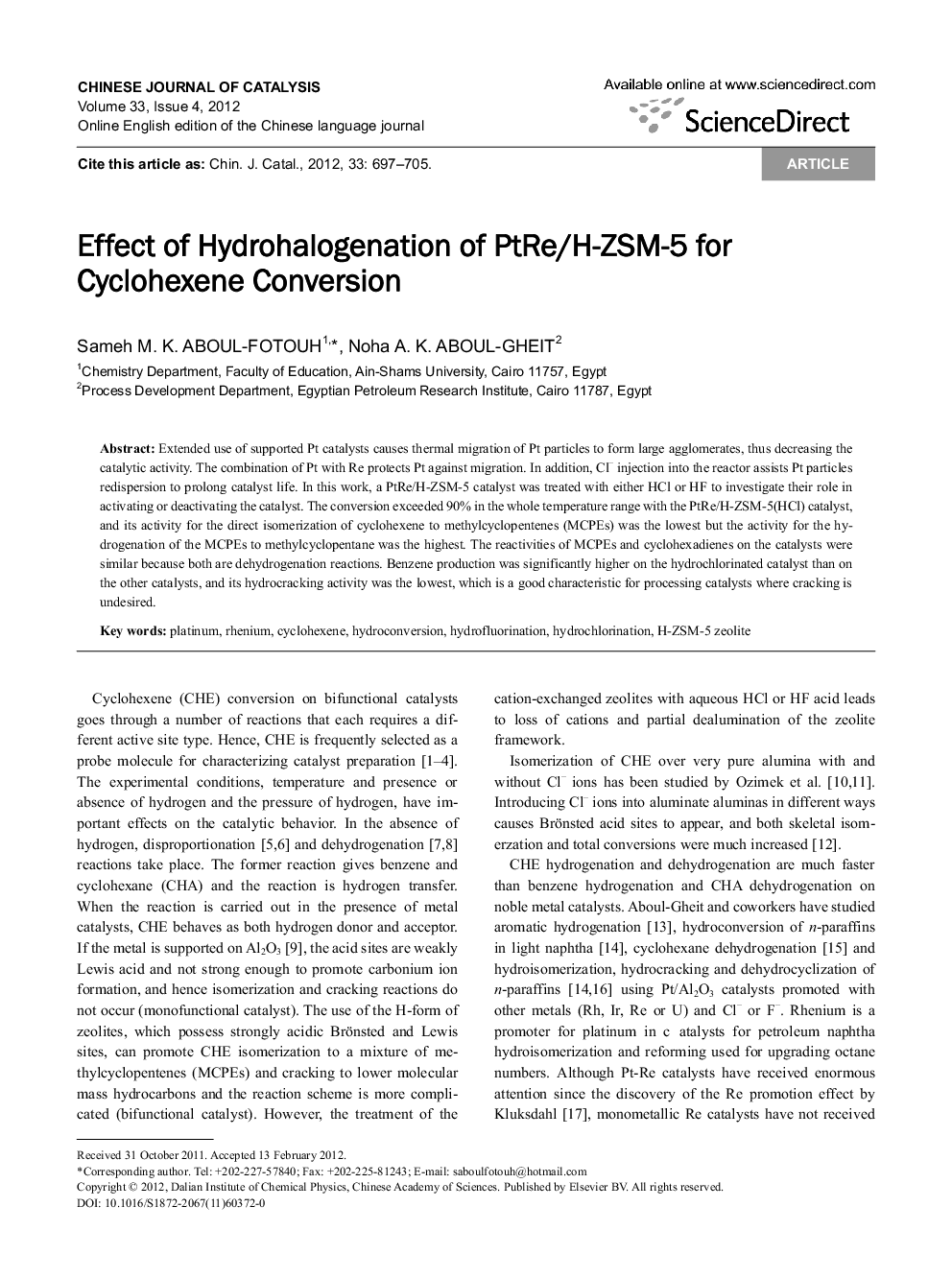| کد مقاله | کد نشریه | سال انتشار | مقاله انگلیسی | نسخه تمام متن |
|---|---|---|---|---|
| 59525 | 1419463 | 2012 | 9 صفحه PDF | دانلود رایگان |

Extended use of supported Pt catalysts causes thermal migration of Pt particles to form large agglomerates, thus decreasing the catalytic activity. The combination of Pt with Re protects Pt against migration. In addition, Cl− injection into the reactor assists Pt particles redispersion to prolong catalyst life. In this work, a PtRe/H-ZSM-5 catalyst was treated with either HCl or HF to investigate their role in activating or deactivating the catalyst. The conversion exceeded 90% in the whole temperature range with the PtRe/H-ZSM-5(HCl) catalyst, and its activity for the direct isomerization of cyclohexene to methylcyclopentenes (MCPEs) was the lowest but the activity for the hydrogenation of the MCPEs to methylcyclopentane was the highest. The reactivities of MCPEs and cyclohexadienes on the catalysts were similar because both are dehydrogenation reactions. Benzene production was significantly higher on the hydrochlorinated catalyst than on the other catalysts, and its hydrocracking activity was the lowest, which is a good characteristic for processing catalysts where cracking is undesired.
Rhenium is the most prevailing promoter for platinum in the naphtha catalytic reforming catalysts used for octane number improvement. An additional promotion of acidity by HCl or HF has also been examined in cyclohexene hydroconversion as a model reaction to explore the activation of intermediate reaction steps producing isomerized as well as hydrogenated, dehydrogenated, and hydrocracked products.Figure optionsDownload as PowerPoint slide
Journal: Chinese Journal of Catalysis - Volume 33, Issues 4–6, April–June 2012, Pages 697–705